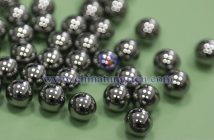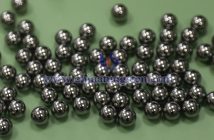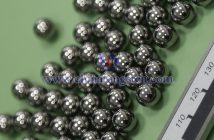Due to their high hardness, wear resistance, and corrosion resistance, tungsten carbide balls are widely used in bearings, valves, seals, and other fields. Surface strengthening technologies are critical for further enhancing their performance. Below is a brief overview of several commonly used surface strengthening technologies for tungsten carbide balls.
1. Physical Vapor Deposition (PVD)
PVD involves vaporizing metal or non-metal materials in a vacuum environment to deposit a thin film coating, such as TiN, TiC, or DLC (diamond-like carbon), on the surface of tungsten carbide balls. These coatings significantly improve surface hardness, wear resistance, and reduce the friction coefficient, extending service life. For example, TiN coatings can reduce wear on tungsten carbide balls under high-speed operation while enhancing corrosion resistance. PVD offers advantages such as uniform coating, strong adhesion, and relatively low process temperatures (approximately 200–500°C), which prevent damage to the substrate’s properties. However, the coating thickness is limited (typically 1–10μm), making it less suitable for applications with high-impact loads.
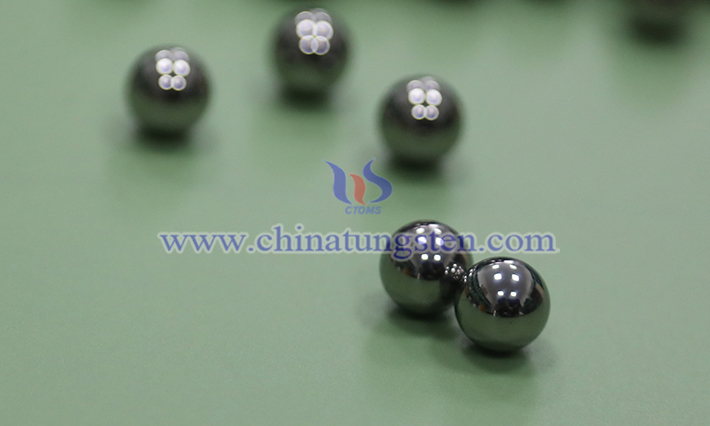
2. Chemical Vapor Deposition (CVD)
CVD deposits high-hardness coatings, such as Al?O? or TiCN, on the surface of tungsten carbide balls through chemical reactions. CVD coatings can reach thicknesses of 10–20μm, offering superior high-temperature resistance and chemical stability compared to PVD, making them suitable for high-load and high-temperature environments. Conventional thermal CVD processes operate at high temperatures (approximately 800–1000°C), which may alter the substrate’s microstructure. In recent years, low-temperature CVD technologies (e.g., plasma-assisted CVD) have been developed to minimize thermal impact. CVD-coated tungsten carbide balls perform exceptionally well in harsh environments like petroleum valves, but the process is costly, and equipment requirements are stringent.
3. Laser Surface Modification
Laser surface modification uses a high-energy laser beam to rapidly heat and cool the surface of tungsten carbide balls, forming a high-hardness, wear-resistant modified layer. Laser cladding can apply alloy coatings such as WC or Ni-based alloys to enhance wear and impact resistance, while laser quenching improves surface hardness through surface hardening while retaining substrate toughness. Laser technology is precise, controllable, and has a minimal heat-affected zone, making it suitable for complex-shaped tungsten carbide balls. However, the equipment is expensive, and process parameters must be precisely optimized to avoid surface cracking.
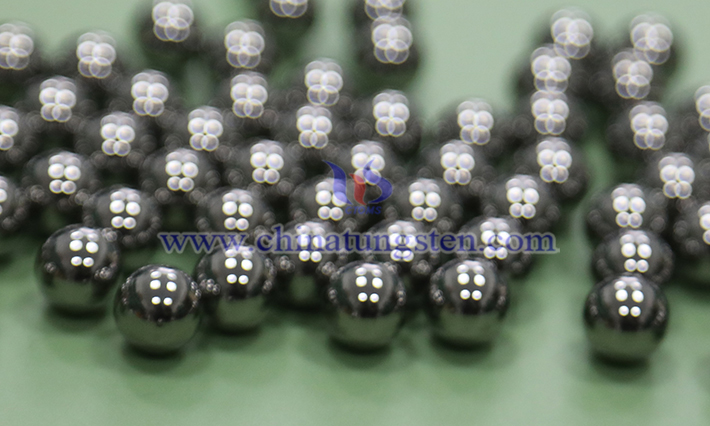
4. Ion Implantation
Ion implantation (e.g., ion nitriding or carburizing) involves infiltrating elements such as nitrogen or carbon into the surface of tungsten carbide balls to form a high-hardness compound layer. Ion nitriding, conducted at relatively low temperatures (approximately 400–600°C), creates a nitride layer that enhances surface hardness, wear resistance, and fatigue resistance. This technology is suitable for applications requiring high surface finish, such as precision bearing balls. However, the penetration depth is shallow (typically tens of micrometers), limiting its effectiveness for heavy-load applications.
5. Coating Technologies
Thermal spraying (e.g., plasma spraying or HVOF) involves spraying molten or semi-molten materials onto the surface of tungsten carbide balls to form thick coatings (50–500μm). WC-Co or ceramic coatings significantly improve wear and corrosion resistance, making them suitable for harsh environments like mining machinery. While the bond strength of sprayed coatings is slightly lower than PVD/CVD, they offer good repairability and are suitable for large-sized tungsten carbide balls.
Conclusion
The choice of surface strengthening technology for tungsten carbide balls depends on specific application scenarios (e.g., load, temperature, corrosiveness) and cost considerations. PVD and CVD are ideal for high-precision, low-impact scenarios; laser modification and spraying are suitable for heavy-load environments; and ion implantation balances cost and performance. In the future, composite strengthening technologies (e.g., combining PVD with laser treatment) are expected to further enhance the overall performance of tungsten carbide balls.

